Today, computer numerical control (CNC) machines are commonplace on the shop floor. We use CNC machining techniques to fabricate products comprised of metals, thermoplastics, and wood if we need to use it. The process generally involves using computer-aided design (CAD) software for automated motion control when cutting or milling parts.
Today, we take for granted many types of CNC machines and machining processes developed over the years. Without the benefit of CNC technology, critical industries, such as aerospace and defense, wouldn’t meet the military’s strict quality and safety standards.
But with the advent of CNC machining techniques, we can now ensure that our products with meet specifications within a fraction of a centimeter and degree.
Without delving too much into the technicalities of modern manufacturing, the goal of this article is to give you an overview of the essentials of CNC technology as a high-level process.
Here’s the most crucial vital information we think you need to know about how CNC works, what it does best, and what it won’t do well.
What is CNC machining?
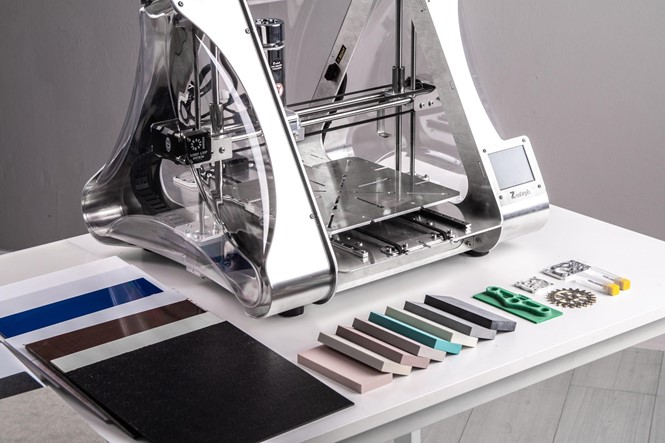
CNC machining is a process well suited for both prototyping and production.
Ian Peterman, CEO Tweet
Before CAD came around, it was challenging to fabricate products reliably and at scale at an industrial volume.
Often, manufacturers need to design several variations of a product to determine if production capacity and processes could meet quality and safety standards.
But with CNC technology, software control everything during machining processes, everything from spindle speed to the motions and angles of the cutting tool. It’s all about precision when it comes to CNC machining.
While CNC machines aren’t necessarily robots in the traditional sense, they automate and speed-up processes that we used to complete manually, making fabrication a time-consuming endeavor for a machinist to finish on schedule.
Overall, CNC machining processes are some of the most innovative manufacturing developments over the last few decades, so what do they do best?
A short history of CNC
Milling has been around for a long time, the advent of computer technology brought us the CNC.
Ian Peterman, CEO Tweet
CNC machining techniques are a uniquely American innovation, which evolved in stages, starting with numerical control capabilities.

Invented by John T. Parsons and Frank L. Stulen in the 1940s, numerical control-based machining is now commonplace on the shop floor. Only then, the machine didn’t use the software as we now know it; it used punch card instructions like the first mainframe computers.
It wasn’t until 1952 when the first commercially available rudimentary CNC machine hit the market. The technology was so promising that the U.S. Air Force showed serious interest, calling on Parsons and Stulen to design and fabricate helicopter blades using numerical control processes.
As the cost of computer technology began to fall in the 1960s, the affordability of industrial devices like CNC machines opened the door for further developments. But CNC as a process didn’t truly take off until the 1980s when it transformed entire industries.
How does CNC machining work?
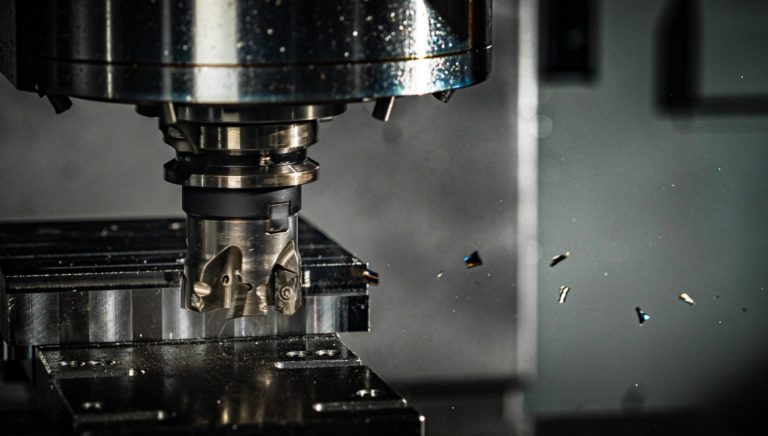
CNC machining, or milling, is a great first introduction to manufacturing processes.
Ian Peterman, CEO Tweet
A CNC machine has three components:
- Command functions
- Motion and drive systems
- Feedback systems
The device works by interpreting software commands that have design specifications. G-Code is the name of the software that runs most CNC machines.
Machine operators either code the CNC machine directly or import instructions from CAD drawings and files. The CNC software then interprets those designs into G-Code that the device can read.
What does CNC machining do best?
CNC machining is great for prototyping and production.
Ian Peterman, CEO Tweet
Manual machining often introduced defects that only came to light further down the assembly line.
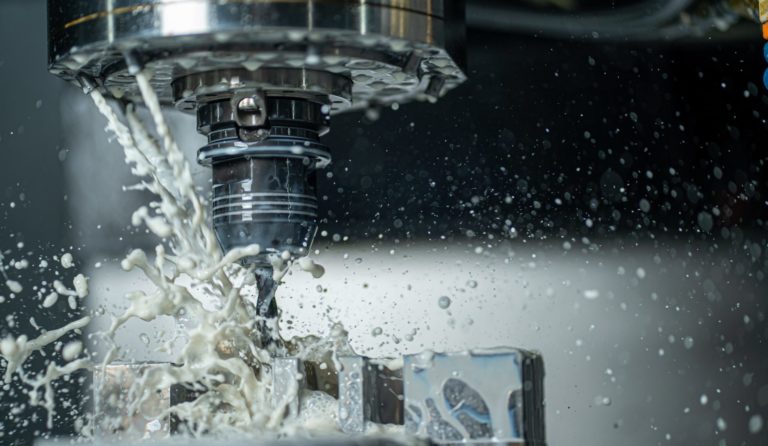
As an alternative, CNC machining makes fabricating key components significantly more accurate, reliable, and safe – far safer for both machinists and the customers who will eventually use the product.
Indeed, CNC machining is so widespread and effective that it’s one of the most predominant manufacturing methods for prototyping and design iteration.
In the past, CNC was a process that only industrial facilities used because it was expensive, yet modern CNC machines are much more affordable – and powerful. Almost any small machine shop with a reasonable budget can purchase a quality CNC machine to afford the investment.
The basic idea is to automate the precision cutting and milling process down to the smallest margin of error when it comes to CNC. While skilled and experienced, a human machinist inevitably makes minor mistakes, even among the most seasoned, veteran operators.
At the time of this writing, the most common types of CNC machines on the market include:
- Routers
- Lathes
- Plasma cutters
- Milling machines
- 3D printing machines
- Waterjets
- Lasers
A further benefit of using CNC machining is that the machine operator needs less training compared to manual machining processes of the past. The machine can also run with less personnel and operate continually 24 hours a day if necessary.
Altogether, these benefits allow manufacturers across industries to be more flexible, agile, and positioned for innovation down the line. CNC technology may be impressive and useful, but it does have a few limitations worth mentioning.
What CNC machining doesn’t do well?
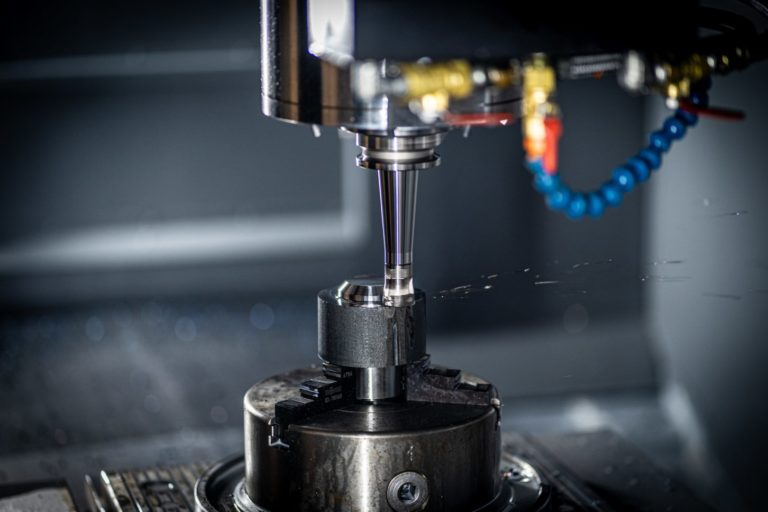
Machining can be a huge investment, so hiring it out is typically best unless you are a larger scale company.
Ian Peterman, CEO Tweet
CNC machining can do a lot, and that’s why the technology has progressed so quickly over the years.
CNC machining can do a lot, and that’s why the technology has progressed so quickly over the years. But the downside of using CNC technology is that it’s generally more expensive than manual machining, requiring a substantial initial investment upfront. The result is that industrial manufacturers can afford it more readily than startups with limited finances.
Indeed, the overall price tag has dropped in recent times, making the technology available to small locally owned machining shops for the first time. However, there’s another downside to using CNC machines: space on the shop floor.
Similarly, the size of the enclosure limits what materials and products can fit inside. Specific CNC machines are also slower than others if the device can run on multiple axis’, yet the biggest downside by far is that the machine takes up significant space on the shop floor.
CNC machining as a process is incredibly accurate and reliable but not perfect. Any operator could still make a mistake that introduces errors and defects into the final product. The problem could be software-related or mechanical, but either way, a poor operation is a culprit; CNC machines significantly minimize that risk.
In the end, CNC machining is a typical manufacturing process today. It has led to innovations in precision manufacturing that weren’t possible several decades ago.
Your Next Steps
Related Conscious Design BLOG Posts
What is Design for Manufacturability?
Logically, you could figure out what Design for Manufacturability means in a broad sense. What does it really mean for you and your product? Design for Manufacturability, or DFM for short, is where Design meets Production. The DFM process takes a design and produces a final design that can be manufactured properly, and at the desired cost. This step is often skipped by those developing their first product. They end up costing more. Investing more on time and money than it should. We’ll go over some of what DFM does for your product and why it is a very key component to developing a great product. Manufacturability This is the first step in DFM. An engineer or designer takes a design and reviews it to ensure the product can be manufactured as efficiently and effectively as possible. Draft angles for injection molded parts, machinable areas for CNC, stacking tolerances, fit checks, and many more items are part of this DFM checklist. BLANK Ian Peterman, CEO Tweet Costing This is where things can get interesting, such as actually increasing part count, decreasing reusable parts, etc may be required to put a product into a certain price window. Costing looks at every cost of a product, from hardware selections, country of production, materials, and how each part needs to be made. A Sourcing Agent is closely tied into this part of the process, and works with the designer through this process. Part Count BLANK Ian Peterman, CEO Tweet How many parts does it take to make your product? I’ve worked on products ranging from just one to the thousands. A part count is a balancing act, sometimes you can make 4 parts into 1, but the cost would be 10 times greater. The part count is an easy way to estimate product complexity, assembly costs, et. Usually more is more expensive, and so a lot of work can be done to decrease the part count, make assembly easier, and take less time. Reuse and Replacement For those businesses who are sustainably minded, which every business should be, designing a product for reuse is something that happens in the DFM stage. Which components can be reused, which need to be replaced, even what parts can be recycled or not are also influence in the DFM process. Material and Finish blank Ian Peterman, CEO Tweet DFM also looks at what materials and finishes are used in a product. Sometimes a material might be chosen that doesn’t work well with a certain manufacturing process or is extra expensive. Changing a material, or finish can change the perceived quality, actual quality, and the cost of a product drastically. Lead time is also influenced by finishes as they add extra time to production. Lead Time A lead time of a product determines how quickly a business can turn its manufacturing investment into a profit. If it takes 10 weeks to produce a product, that means a business is going to wait at least 10 weeks before it gets paid. Decreasing lead time also falls within the DFM process. Shorter lead times mean quicker product turnaround, as well as usually less costly. Through selecting processes, materials, and finishes, the DFM process can save businesses from having long costly lead times on their products. Your Next Steps manufacturing Products Kickstarters and Manufacturing: What to Pay Attention to manufacturability Conscious Design Choosing a Manufacturer choose a manufacturer Related Conscious Design BLOG Posts Author Mr. Peterman View all posts
Choosing a Manufacturer
We’ve talked about why you should hire out sourcing here, but in case you want to dive into this yourself, here are some things to look at. A common question when looking for manufacturers for your product is whether you want to source domestically or from overseas. You likely already know that it’s almost always cheaper to source your products overseas, but there’s a lot more to that decision than just the upfront investment and cost per unit. Things like quality, shipping, and time to delivery are other items to look at and can change how you might decide on a manufacturer. If you are just looking on your own, some of the best resources for finding manufacturers can be free online supplier directories. These directories can contain profiles for hundreds, or even thousands, of manufacturers, wholesalers and suppliers. There are many for domestic and overseas options. Looking through the sea of options can be a bit overwhelming. Making sure your idea is protected when discussing it and that the technical requirements are understood is very important when finding the right supplier for your product. As an area of expertise, we can support you through this and make sure those conversations are started with the right information. Domestic and overseas sourcing have their advantages and disadvantages which we will look at below: Domestic Advantages Higher manufacturing quality and labor standards Easier communication with no language barrier Marketing appeal of being made domestically Easier to verify reputable manufacturers Faster shipping time High intellectual property right protection Greater payment security and recourse BLANK Ian Peterman, CEO Tweet Domestic Disadvantages Higher manufacturing costs Higher setup costs Less manufacturing type choice Overseas Advantages BLANK Ian Peterman, CEO Tweet Lower manufacturing costs Lower setup costs High number of manufacturers to choose from One-stop services like Alibaba have made it easy to navigate suppliers Overseas Disadvantages Lower perceived quality from customers (Usually) lower manufacturing and labor standards Little intellectual property protection Language and communication barrier can be difficult to navigate Difficult/costly to verify manufacturer and visit on-site Longer shipping time Cultural differences in business practices Product importation and customs clearance Less payment security and recourse BLANK Ian Peterman, CEO Tweet Things are changing in every market, and always will, making what would be a good decision today possibly be a bad one in the future. For the US market, Canada and Mexico also offer similar pros and cons as domestic, but the US dollar is stronger, so these are sometimes cheaper than the US. The costs of manufacturing in many countries in Asia is increasing, as is labor costs. When looking at the European manufacturing market there are many options that compete very well with US and Asian manufacturers. When researching options, it’s important to look at the specific needs of the product being made, where it’s being sold, and other logistics and costs that happen when taking a product from a manufacturing document to a product in consumers hands. We source the right suppliers and vendors for you and your product or business. Your Next Steps Developing Smart Products What does it take to develop a smart product? Develop a Smart Product The Peterman Method™ Learn about the Peterman Method and download your own copy Peterman Method™ Related Conscious Design BLOG Posts Author Mr. Peterman View all posts
The Importance of Prototyping
I can’t tell you how many clients have come to me saying they need help developing a prototype to get funding or the feedback they need to finish developing the product.

